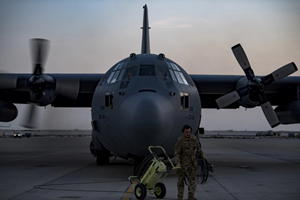Velo3D Sapphire Printers Become First Metal 3D Printers to Achieve DOD Green-Level STIG Compliance
The certification allows Sapphire printers to be connected to the DOD’s Secret Internet Protocol Router Network (SIPRNet) and gives customers confidence that their metal 3D printers are hardened against potential cyberattacks and other vulnerabilities.
Velo3D, a metal additive manufacturing (AM) technology company for mission-critical parts, has earned the U.S. Department of Defense’s (DOD) Green-level STIG (Security Technical Implementation Guide) Compliance for its Sapphire family of 3D printers. The certification allows Sapphire printers to be connected to the DOD’s Secret Internet Protocol Router Network (SIPRNet) and gives customers the confidence their metal 3D printers are hardened against potential cyberattacks.
The rigorous qualification process was achieved through collaboration with a third party to generate compliance, vulnerability and remediation reports from Sapphire printers that measure against security benchmarks. The testing process confirmed that all Velo3D printers provide the highest network, data and software security, as well as vulnerability management, reducing the risk of security breaches. This includes Sapphire, Sapphire 1MZ, Sapphire XC and Sapphire XC 1MZ. Test results indicated Velo3D achieved an average score of 97% on its tests, exceeding the DOD’s threshold of 90% needed to achieve Green-level STIG compliance, which is highest certification level offered.
The company says the team at Velo3D strives to go above and beyond to meet our customers’ needs. So when customers that work with the DOD inquired about STIG compliance, the company quickly went to work to achieve the highest level of certification available.
Obtaining the certification should empower all Velo3D customers — but especially those that work with the DOD and other government agencies — to fully leverage the capabilities of this AM technology without worrying about the risk of stolen intellectual property.
In addition to being SIPRNet-ready, Velo3D Sapphire printers can now also connect to the DOD’s Nonclassified Internet Protocol Router Network (NIPRNet). STIG compliance is required for DOD agencies and contractors that connect to both networks, as well as networks operated by other branch departments of the federal government.
Without STIG compliance, government agencies and contractors using metal 3D printers were required to keep them disconnected from network connections. This technique — commonly referred to as air gapping — can complicate the process of managing printers.
In the case of Velo3D, engineers and printer operators could not fully leverage the capabilities of its fully integrated solution, which enables users to easily monitor the printing of parts, analyze the data generated in the printing process and transfer print files to and from printers. Now, with Velo3D, engineers can utilize all aspects of metal AM technology when manufacturing parts that are classified or International Traffic in Arms Regulation (ITAR) protected without risking stolen intellectual property or other cyberattacks.
STIG compliance will also make it easier for defense contractors and agencies to purchase Sapphire printers as they will no longer have to obtain exceptions and other approvals that are required for noncompliant printers. Current Velo3D customers can easily upgrade their existing Sapphire printers to achieve STIG Green-level security. The software upgrade can be completed with minimal impact on the customer.
To learn more about Velo3D’s STIG certification and the process followed to achieve compliance, read the blog by Aaron Katske, vice president of Information Technology.
Related Content
Quadrus: Powder Management Tactics for Tungsten Rhenium and Other AM Alloys
The expert in additive manufacturing of high-value parts for the Defense Department often must change from one exotic material to another in its powder bed machines. Cleaning is a core competency. Here are lessons of this company’s system for working with an ever-changing mix of 3D printed alloys.
Read MoreNeighborhood 91 Expands, With Metal Powder Works and HAMR Now Open
Ribbon cuttings for the Pittsburgh campus's newest tenants coincided with the announcement that a DOD-funded resilient manufacturing program will also be developed at the site.
Read MoreAdditive Manufacturing for Defense: Targeting Qualification
Targeting qualification in additive manufacturing for the defense industry means ensuring repeatability as well as reliability as there is much at stake, including human lives. Certain requirements therefore must be met by weapons systems used by the defense industry.
Read MoreVideo: 5" Diameter Navy Artillery Rounds Made Through Robot Directed Energy Deposition (DED) Instead of Forging
Big Metal Additive conceives additive manufacturing production factory making hundreds of Navy projectile housings per day.
Read MoreRead Next
Bike Manufacturer Uses Additive Manufacturing to Create Lighter, More Complex, Customized Parts
Titanium bike frame manufacturer Hanglun Technology mixes precision casting with 3D printing to create bikes that offer increased speed and reduced turbulence during long-distance rides, offering a smoother, faster and more efficient cycling experience.
Read MoreCrushable Lattices: The Lightweight Structures That Will Protect an Interplanetary Payload
NASA uses laser powder bed fusion plus chemical etching to create the lattice forms engineered to keep Mars rocks safe during a crash landing on Earth.
Read MorePostprocessing Steps and Costs for Metal 3D Printing
When your metal part is done 3D printing, you just pull it out of the machine and start using it, right? Not exactly.
Read More





















